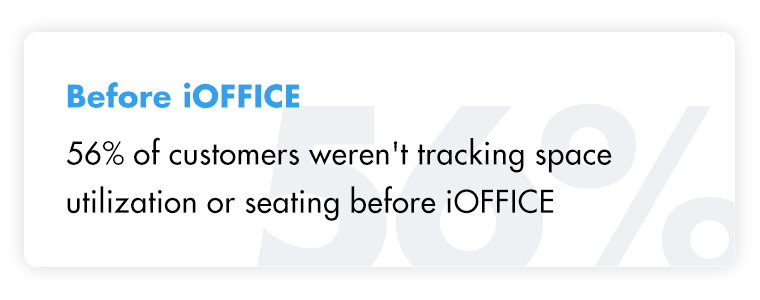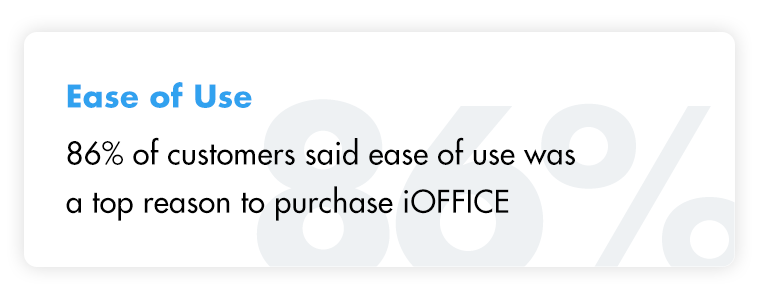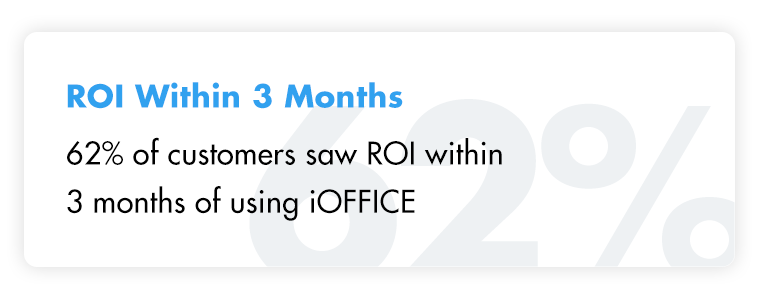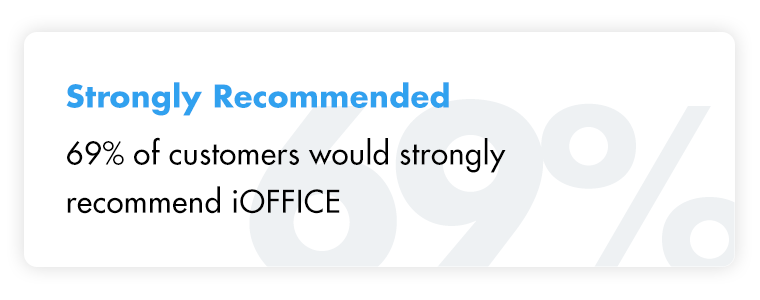Why Customers Choose Our Facility Management Software


In a recent customer survey, iOFFICE received a Net Promoter Score of +62, meaning the majority of respondents said they would be very likely to recommend us to a friend or colleague.
What makes our facility management software so appealing?
For many respondents, it’s the fact that it’s so much more than FM software.
What were customers’ top challenges before implementing facility management software?
It depends on whom you ask.
For CRE leaders, it’s that their real estate data was in so many different systems, it was difficult to make sense of it. Reporting was largely a manual process, and they had little to no visibility into key metrics that mattered.
This was the case for Siemens. With 27 locations and over 40,000 employees in the US alone, leaders of the industrial manufacturing company needed an easier way to manage all those buildings.
“iOFFICE has provided opportunities to automate what was a largely manual effort to understand and display the current state of our portfolio,” Siemens business professional Matt Schaffer said. “This aids our strategic real estate and service management decisions during a merger.”
Facility managers and workplace leaders reported a similar problem at a different scale. Fifty-six percent said they were unable to see how their workplaces were being used or where people were sitting.

Others noted their internal facility management systems and processes had fallen behind, and their approach to maintenance was mostly reactive.
Why did customers choose our facility management solution over others?
Again, the answers vary, but some common themes emerge.
The ease of use of our facility management software has always been a deciding factor, and 86% of respondents cited this as a top reason for choosing iOFFICE.

Others top drivers included the overall functionality, configurability, and the ability to integrate with other systems.
This is crucial, as many growing enterprises inherit a variety of different systems to manage workplace data and processes.
Consider healthcare company McKesson, which was using 58 different apps and software systems to manage its facilities, IT, and HR functions. This made it nearly impossible to uncover a single source of trusted workplace data and analyze it to make property management decisions. By moving to an integrated workplace management system (IWMS), the company reduced its total costs of ownership by floor, simplified its technology stack and improved response times to service requests.
What benefits did customers experience from our facility management software?
Nearly half of respondents said our software increased productivity and improved the employee experience.
They achieved this in many different ways. One common challenge we hear when organizations eliminate assigned seating in favor of a more flexible workspace strategy is that it’s difficult for employees to find people and find space.
The Hummingbird workplace app puts that power at employees’ fingertips. Within seconds, they can find their colleagues, reserve a desk or a room near them, and get to work.
It’s not surprising, then, that nearly a third of survey respondents said iOFFICE helped them create an agile workplace.
Another third of respondents also said it allowed them to reduce or consolidate multiple systems.
“iOFFICE has helped us identify unused square footage to create more efficient space planning and space projections,” said Shawna Stacey, interior design specialist and space and facilities planner at Sherwin-Williams. “It has helped us strategically plan space needs and plan for our future headquarters design.”
When do customers see ROI in their facility management software?
Facility management software can be a substantial investment, so this is a common question people ask when they’re considering it.
And there’s good news—over a fourth of our survey respondents said they saw ROI immediately.
That may have come from eliminating expensive legacy systems that were difficult to maintain. For other companies, it was a result of reducing or eliminating unused office space. Still others eliminated assigned seats to get more use out of every workspace.

Another 34% of customers saw ROI within three months, while 14% said the software paid for itself within six months.
Only 14% said it took more than a year to see a return on their investment.
As you build the business case for facility management software, make sure to factor in these considerations:
- What systems or technology could you eliminate?
- How many employee hours will you save by eliminating manual tasks?
- Which business processes will you improve, and what will be the impact?
- How much could you save by reducing building operating costs?
- How will your investment impact employee productivity?
- Will the software still support our needs five years from now?
With cloud-based software that integrates easily with existing and emerging solutions, you’ll be well positioned to support the ever-changing needs of your workplace.
What strategic priorities did iOFFICE help customers achieve?
The past year was defined by the need to be flexible, with 80% of customers prioritizing new seating strategies.
That includes agile workplace practices like activity-based working, hot desking, and desk hoteling.

Planning and executing return-to-work scenarios also rose to the forefront for many companies. Nearly 70% said they were focused on redesigning their workplace for physical distancing, based on the CDC’s recommendations.
Our new Space-Right™ space planning feature makes that much easier. Customers can set the parameters for the desired amount of space between workspaces, and the algorithm will instantly reconfigure their floor plans for safer seating.
They can update seating arrangements and manage alternating shifts to reduce capacity in the workplace.
The software will even identify unsafe areas, such as small conference rooms that need to be repurposed for single use.
This allows employees to collaborate safely in person.
The challenges of maintaining a safe workplace also included visitor management and additional cleaning and sanitation, according to the survey. This is likely to continue into at least the first part of this year, as organizations delay reopening while waiting for more people to receive COVID-19 vaccines.
In the meantime, Melissa Levy, a facilities manager at Insight Global, said iOFFICE has transformed asset management and helped the professional services company prepare for a safe return to the office.
“With a very large, new corporate headquarters, we needed a standard way of understanding where everything and everyone is at all times,” she said. “When return to work officially begins, it will also be a vital tool for wayfinding and moving employees around safely.”
We appreciate everyone who participated in our customer survey.
The workplace is constantly evolving, and so should the technology that powers it.
While traditional software solutions have focused primarily on managing buildings and assets, today’s solutions also need to create an exceptional workplace experience. iOFFICE is already doing this with our next-generation integrated experience management system, known as iXMS. The feedback we received will help us better serve our customers now and in the future.
Ready to discuss how our facility management software can help you achieve your goals in the new year? Request a 15-minute consultation today.
